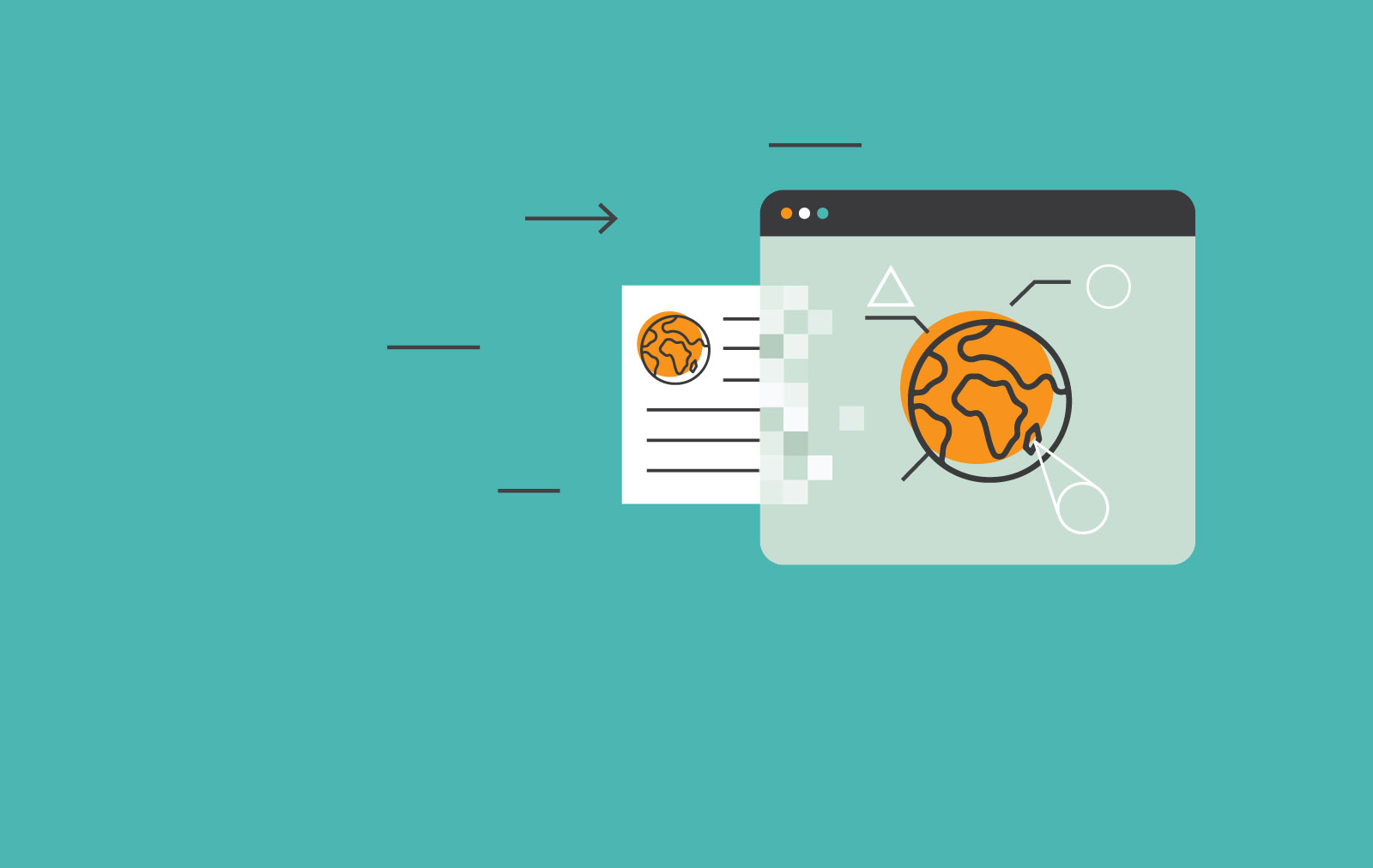May 8, 2019
Behind the Scenes: Our Proven Web Design Process

Unfortunately, snapping your fingers, waving a wand, or saying abracadabra just won’t cut it. Today’s complex website projects require a deliberate, methodical process to ensure the success of your next website. The good news? We’ve spent the better part of a decade crafting a malleable process that works for the vast majority of projects we encounter.
Years ago, we used to attempt to learn everything we could about a given prospect’s project up-front, during the sales process. Over the course of weeks, or even months, we’d take diligent notes and craft a strategic proposal to outline exactly what features and functionality we were going to build, how long it was going to take, and how much it was going to cost.
Worst case scenario? We wouldn’t be awarded the project, thus it was a colossal waste of time for both the agency and our prospective client. Best case scenario? The client would have two or three new stakeholders at the kickoff meeting, each with their own goals and ideas for the site. By the end of the kickoff meeting, our valiant attempt to accurately define the scope, price, and timeline was all for naught.
Over time, we worked to implement a better way to engage new prospects. By starting with a relatively small strategic discovery process, we were able to work with all the client’s stakeholders and collaborate to plan a website that would accomplish key goals, hit key metrics, and fall within the client’s desired budget and timeline.
When discussing projects with prospective clients, we typically know the overall requirements and scope of the site. Thus, we’re able to recommend an appropriate amount of upfront strategy necessary to ensure the success of the project. The key isn’t having the right process, it’s having the right amount of processes. Too much can place a burden on the project, while too little can cause the project to go off-track. Our internal systems and procedures continually morph to meet the demands of specific projects, but typically follow the same general flow. Below, I’ve outlined discovery process typically employed for larger projects, complete with abundant content and complex functionality.
PHASE 01: DISCOVERY, RESEARCH & STRATEGY
Typical timeline for this phase: 6-8 Weeks
Through a collaborative process, we work with clients to understand their industry, goals, audience, project parameters and desired outcomes. During this phase, we’ll determine exactly what we’re building, how long it will take and how much it will cost.
Establish Project Plan, Gather Assets
Our project manager distributes a project survey and begins guiding the client team through the initial steps of our process, including gathering assets and existing marketing materials.
Research & Review Review Client Survey
This concise and comprehensive questionnaire prompts the client into articulating expectations. We review and clarify the responses to the survey to better understand the target audience and goals, as well as begin to formulate strategies for success.
Review Existing Marketing Materials & Hosting Requirements
Our team reviews any relevant documentation provided, as well as discusses hosting requirements as hosting should never be a last-minute decision.
Competitive Research
We review and research the competition to discover where they are succeeding, where they are failing, and where there are opportunities for differentiation.
Review Analytics, SEO Considerations, Usability Testing
We dive into existing Google Analytics data and review SEO rankings to spot the key areas in most need of improvement. In addition, we discuss any usability testing that has been done to date.
Preliminary SEO Discussion
We discuss your previous Search Engine Optimization efforts, if any, and make appropriate recommendations moving forward.
Compliance Review
We review your business operations and estimated site traffic and recommend an appropriate level of both ADA and GDPR compliance.
Technology Audit
Provided access, we review current platforms and conduct a technology audit to gain a better understanding of existing functionality that may need to be migrated to the new site.
Audience Research and/or Stakeholder Interviews
Interviews play a key role in the project discovery process. We gather data from multiple sources to help inform, educate and make unbiased decisions in regards to the design, content, and site architecture.
Collaborative Discovery Workshop
Through a collaborative day-long workshop, clients are guided through unique goal-setting exercises, visual gut checks and even participate in joint sketching exercises.
The “Big Idea” Workshop
Our team takes the information gathered during the Collaborative Discovery Workshop to ideate our Big Idea to differentiate our clients from the competition and position new sites for success.
Content Creation Workshop
We conduct a content workshop to collaborate with your team on the specific pieces of content needed to be created and the time that should be allotted for each piece of content. We then provide a content creation workflow and resource document to our clients as a guide before content creation begins.
Typically, our strategic discovery phase will include the following deliverables, documenting our research findings and establishing the scope of work:
Content Audit
The Content Audit can include any or all of the following deliverables: SWOT Analysis, Content Analytics Review, and/or Content Inventory
Technology Audit Report
We document and deliver key functionality requirements and technical considerations.
Web Best Practices Documentation
We provide a Web Best Practices document to guide our clients in the creation of content that is suitable for the web.
SEO Basics Documentation
We provide our clients with an SEO Basics Guide, enabling your content creators to understand and adhere to best practices.
User Personas Guide
We research the intended audiences, study the competition and create a series of 3-5 detailed user personas. Each persona will have conversion goals and serve to guide all strategic decisions throughout the project.
Site Architecture
Guided by knowledge gained during the content strategy, we create a detailed site map, outlining the pages and location of content throughout the site.
UX Planning & Interactive Prototypes
We formulate a UX plan and create navigable prototypes for key pages of the site.
Visual Brief
We create moodboards to document to set the visual tone and communicate the proposed design direction.
Project Specs & Documentation
The project specs consolidate the decisions we’ve made together and serves as a general outline of the project, capturing goals and measurements for success. This document also clarifies your overall scope of work and any specific features & functionality required to achieve your stated objectives. Lastly, the project brief also includes a high-level timeline, outlining the design, development, testing, training, launch and maintenance phases.
Statement of Work and Strategic Proposal for Project Execution
Lastly, to wrap up the planning phase, we provide a detailed Statement of Work, outlining the specific timeline and fees necessary to achieve success in all subsequent phases of the project. At this point, we are able to state with much confidence, exactly what we’re building, how long it will take, and how much it will cost. This level of up-front planning and strategy may seem like a lot of work, and it is. However, it is absolutely vital to lay a proper strategic foundation to ensure the ultimate success of the project.
With the strategic planning phase behind us, we are now ready to work with our client to execute the design, development, testing, launch, and maintenance phases. The steps outlined below often vary to meet the needs of individual projects.
PHASE 02: CREATIVE SERVICES
Typical timeline for this phase: 4-8 weeks
We kick off this phase by finalizing the content strategy and creating or gathering text, photos, and other content for the site. Then, using key information gathered in the Strategic Discovery Phase, we design the user interface based on the Visual Brief and approved UX Design (wireframes). The initial designs will be done using Sketch and prepped to be posted for client review. Upon approval of the homepage design, we then create templates for each main section of the website. To maintain a premium design aesthetic while ensuring an optimal experience for all users, new sites will be designed in accordance with Single-A ADA Compliance Guidelines. Lastly, client-approved design files are prepped and handed to the development team for implementation.
PHASE 03: DEVELOPMENT & TESTING
Typical timeline for this phase: 8-12 weeks
We code websites by creating a series of responsive “pixel perfect” templates based on approved user interface designs and adhere to Single-A ADA guidelines as well as GDPR regulations (if necessary). Our development team builds most sites on WordPress or Drupal, allowing our clients’ website administrators to add, edit, and remove future content as needed. We dig deep under the hood of the Content Management System to customize the backend, thus accommodating the features and functionality requirements of each and every new site. Content is entered throughout the development phase and we will enter Page Titles, Meta Descriptions, H1 Tags, and Alt Text to lay a strong foundation for future SEO initiatives. Upon completion of the Beta site, our team performs thorough QA and testing against all modern browsers, on both desktop and mobile platforms. We conclude this phase by finalizing hosting plans and prepping the Beta site for client presentation.
PHASE 04: DELIVERY, TRAINING, AND LAUNCH
Typical timeline for this phase: 2-3 weeks
We present the Beta site to the client and train the appropriate parties to use the Content Management System. Upon final approval, our development team will prep and launch the site, followed by a round of testing on the live server before announcing the launch of the new site to the world.
So the site is live. Now what?
In reality, the launch of the website is just the beginning. Just like any piece of software or application, websites need to be backed-up, updated, and maintained on a regular basis. We typically put our clients on a maintenance plan, offering a variety of services to keep the site secure and running smoothly. Also, without traffic and conversions, a website is a bit like a billboard in a forest. Not ideal. We engage our clients to continually monitor analytics against current UX trends to spot areas for improvement.
In Conclusion
Attempting to condense and simplify our proven web design process into a single blog post was no easy feat. In reality, our process is customized for each and every project, as each and every client is unique. Also, just when we think we have it nailed, we spot areas for process improvement and work to implement them on future projects. Want to learn more? Reach out and we’d be happy to talk shop!

